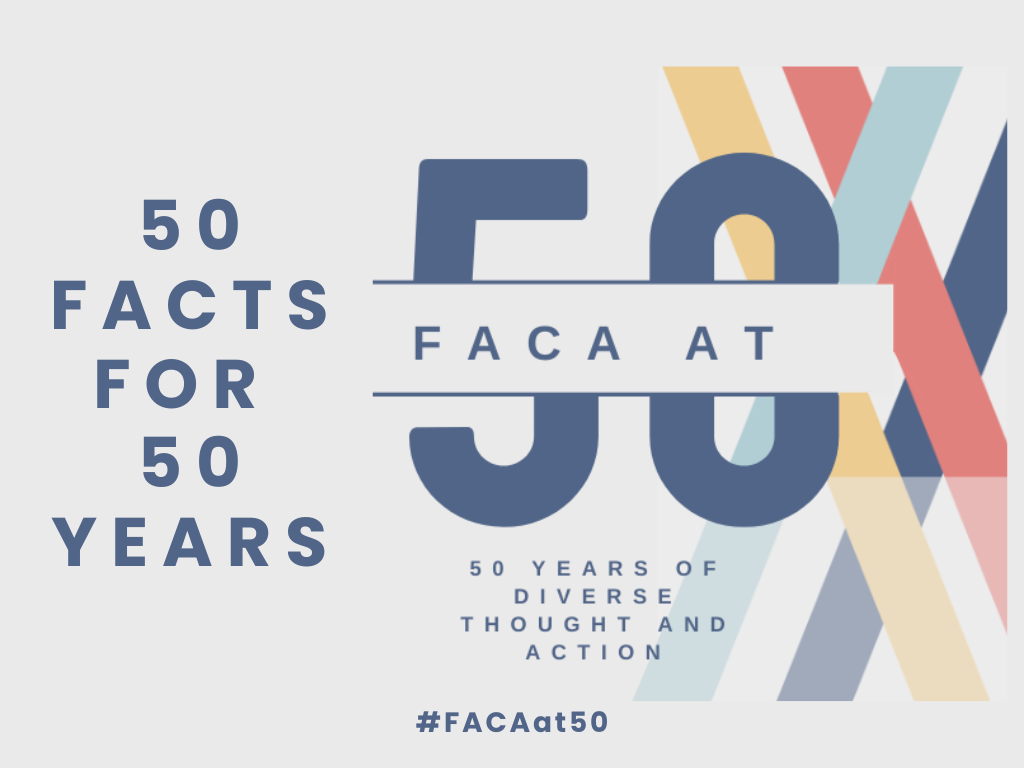
50 Facts for 50 Years: Building the Framework of FACA
Post filed in: FACA
Did you know that fifty years ago the Federal Advisory Committee Act (FACA) was signed into law? You might even be asking yourself, what is FACA? To learn more about FACA and help celebrate 50 years of diverse thought and action, this blog series will provide you with 50 facts for 50 years! Starting with 1 through 12:
- Before FACA, advisory committees existed for many years with little to no regulation. The first advisory committee was reputedly formed in 1794 when President Washington sought the advice of a committee during the Whiskey Rebellion.
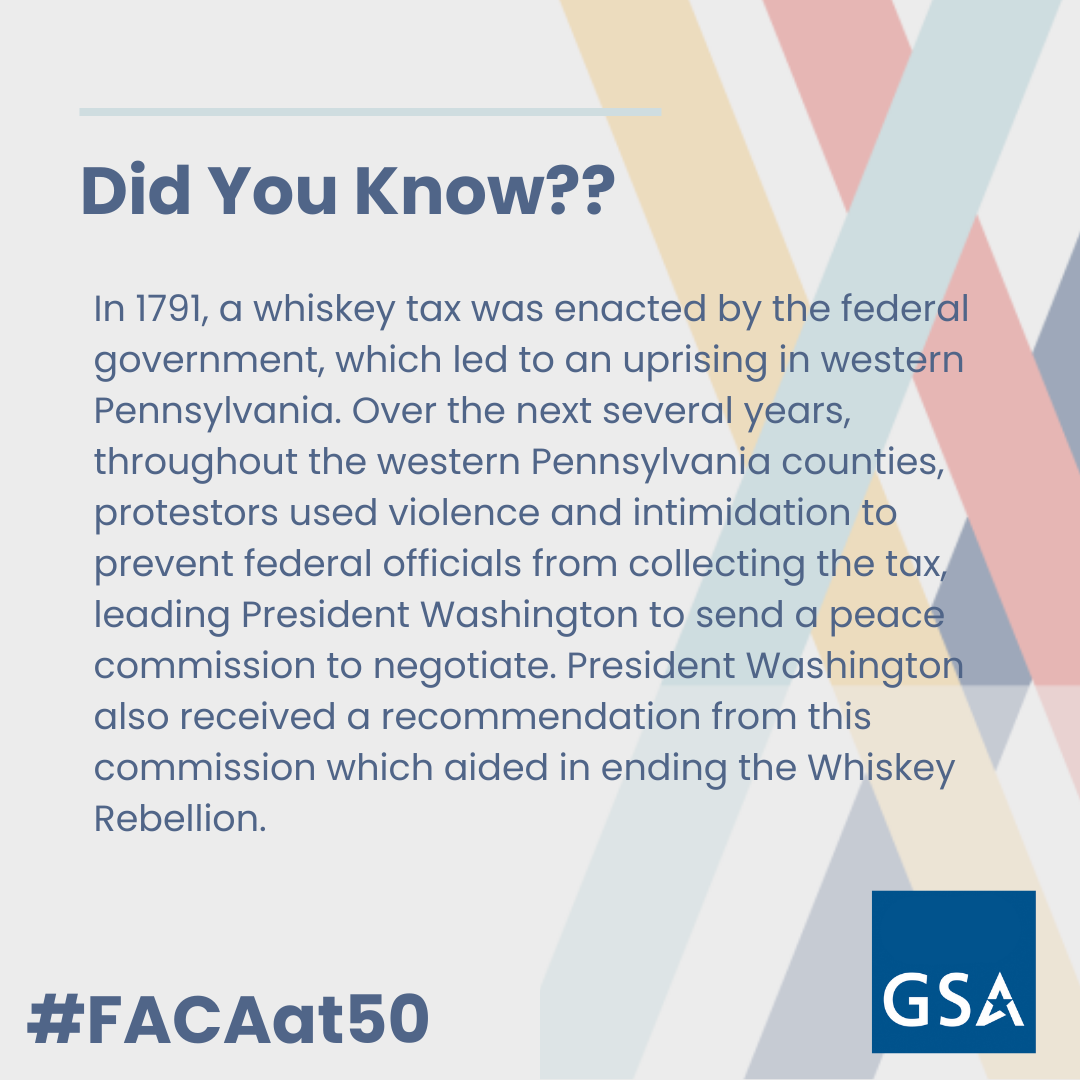
2. Throughout the 1800s and into the early 1900s, a variety of advisory committees existed to provide advice to the government. Did you know the United States Military Academy Board of Visitors (created in 1815) and the United States Naval Academy Board of Visitors (created in 1879) still exist today and provide advice on all mission related tasks at both academies?
3. Fun Fact: In 1947, President Truman appointed an advisory committee to make recommendations to reorganize the operations of the federal government. Officially named the Commission on the Organization of the Executive Branch of the Government, commonly known as the Hoover Commission, one of the commission’s recommendations was the establishment of an “Office of the General Services” which led to the creation of the General Services Administration (GSA) in 1949.
4. As federal advisory committees continued to grow after World War II, efforts began to regulate these committees as concerns within the Executive and Legislative branches grew regarding their management, cost and accountability.
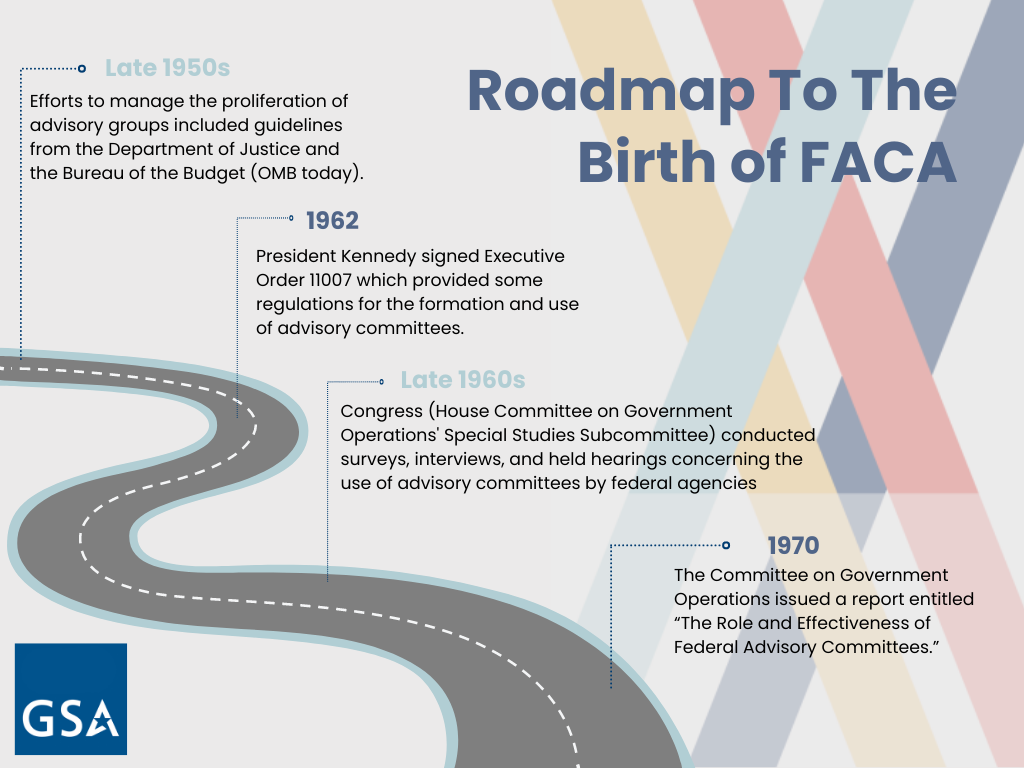
5. The December 1970 “The Role and Effectiveness of Federal Advisory Committee” report noted that in order to effectively manage an advisory group there needs to be constant attention, good management and organization practices, tact and know-how. Federal advisory committees were here to stay and legislation was needed!
6. Series of hearings were held and during one in 1971 more than 30 witnesses testified over 12 days in front of the Senate Subcommittee on Intergovernmental Relations! They concluded:
Advisory committees were “a useful means of furnishing expert advice, ideas and recommendations as to policy alternatives” but “there [were] numerous such advisory bodies that are duplicative, ineffective and costly, and many which have outlived their usefulness, and that neither the Federal agencies, the Executive Office of the President, nor the Congress, have developed any effective mechanisms for evaluating.”
7. Recommendations from “The Role and Effectiveness of Federal Advisory Committee” report became the foundation of a bill which was introduced on February 2, 1971 called the Federal Advisory Committee Standards Act. Later, it would be renamed to the Federal Advisory Committee Act!

8. FACA was signed into law on October 6, 1972 by President Nixon. Do you know the path FACA traveled before landing in the Oval Office?
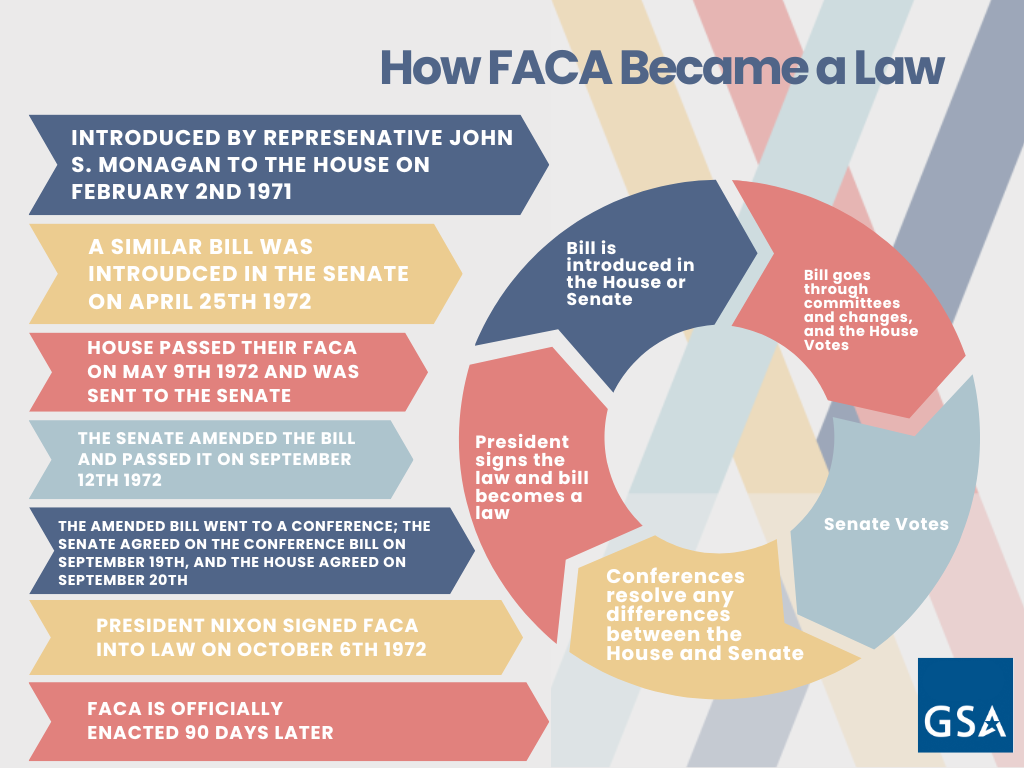
9. Did you know while a bill passes in both houses of Congress and is signed by the President, it takes a period of time before it is enacted? 90 days after the FACA legislation was signed (January 5, 1973) it began being implemented throughout the executive branch of the Federal government.
10. FACA established the legal framework for establishing, operating, and terminating federal advisory committees which provide advice or recommendations to the executive branch, including the President of the United States.
11. Key Tenets of the Federal Advisory Committee Act are to promote:
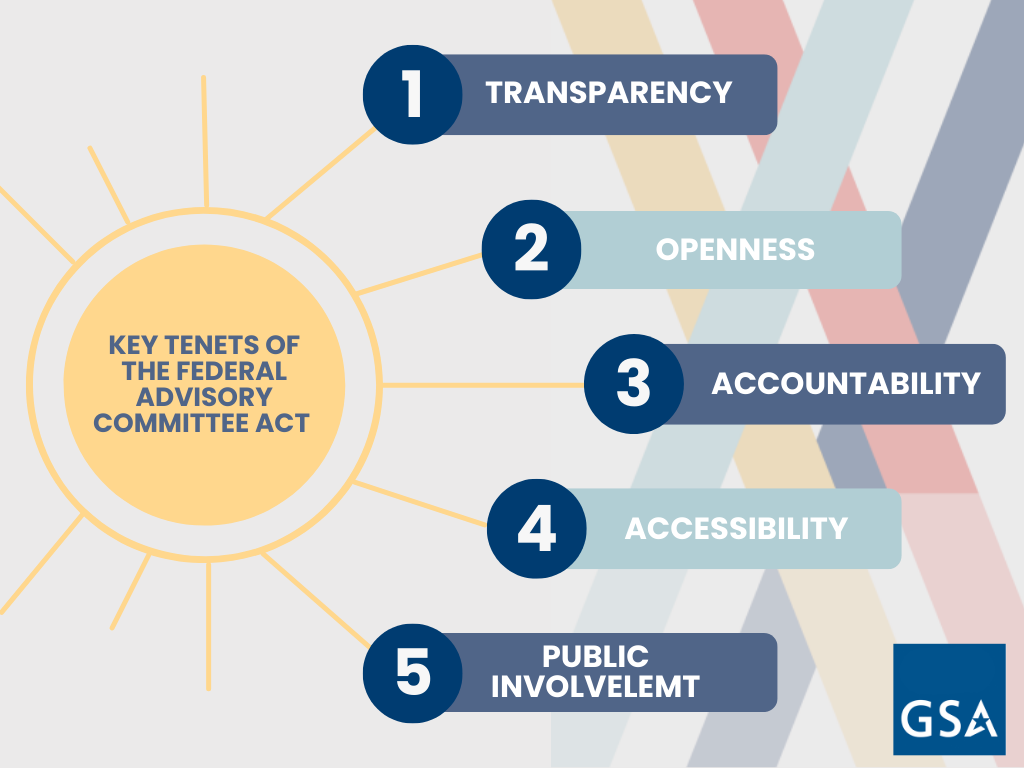
12. FACA is one of the “Four Pillars of Openness in Government” Statutes:


 U.S. General Services Administration
U.S. General Services Administration
